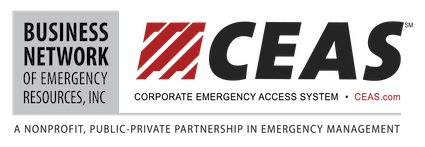Leveraging Essential Employees for Business Continuity Planning in the Pandemic Era
Author: Peter Picarillo, President and CEO, Business Network of Emergency Resources, Inc. (BNET) Published by IAEM- April 2022 Bulletin. “Emergency Management-Unexpected”
Amid the surging COVID-19 pandemic in 2020, there was a marked change in how events unfolded, mainly how the government and the private sector viewed and managed the event.
Politicians took center stage from the government’s perspective, and health commissioners were nearby. But where were all the traditional participants, emergency managers, law enforcement, fire departments, emergency medical services (EMS), and the national guard? The usual participants whose careers were centered around planning and responding to events like this seemed no longer important enough for prime-time press conferences. What was going on?
How orders were conceived and formulated was anybody’s guess, depending on what state someone resided in. Foremost, the appearance of control often seemed more important than the orders. In some cases, the authority of local elected officials in some home-rule states was usurped by gubernatorial authority for what seemed indefinite. Moreover, directives often conflicted among federal, state, and local governments, adding confusion. Granted, Americans faced an unprecedented event in their time. Still, with a national election approaching, they had a front-row seat to the full-on politicizing of an emergency. Yes, they’d seen this before, but this time it was different.
For the first time, Americans were faced with the prospect of a massive nationwide shelter-in-place emergency and a need for hands-on apolitical management by the government. Terms like “essential employee” and “essential business” would take on new meanings, and “telecommuting” became the new norm. Would the COVID-19 pandemic become the precedent for how emergencies would be managed in the future?
The private sector had its challenges: maintaining operations while staff remained at home, distracted by homeschooling or battling illness. Supply chains were disrupted, and entire economy segments were basically shut down. Businesses once deemed nonessential became critical to community survival. The definition of an essential employee was turned on its head, with employees previously deemed nonessential unexpectedly vital and vice versa.
On March 20, 2020, the mayor of New York City issued Emergency Executive Order No. 102, which directed businesses to utilize “to the maximum extent possible” telecommuting and restricted the in-person workforce at any location by 50 percent (expanded to 75 percent the following day). The order went on: “Any essential business or entity providing essential services or functions shall not be subject to the in-person restrictions.” This was followed by a list of industry types that were exempt from this order plus the catch-all “and any other business that has been designated as essential by the Empire State Development Corporation pursuant to Governor’s Executive Order 202.6 or designated as essential pursuant to any subsequent order issued by the Governor.” This meant nearly every business.
The mayor then directed “the Fire Department of the City of New York, the New York City Police Department, the Department of Buildings, the Sheriff, and other agencies as needed to immediately enforce the directives set forth in this Order in accordance with their lawful enforcement authorities.”
What does this all mean? Here are a few takeaways from these events.
- First, the event is the primary determiner of which industries are considered “essential.” Second, the question has to be asked, “essential to what?” Community sustainability, critical infrastructure, or something less? In the cited example, the NYC mayor tried to include about every industry he could think of (he probably missed a few); the simple approach might have been “essential employees only.”
- Although there were many specific industry types listed in the order, it makes the order nebulous and less practical to enforce. In the end, the police officer on the street does not carry a reference copy of the Executive Order and only wants to know if someone is essential. If challenged, how would the employee substantiate it?
- Elected officials tend to opt for broad terms like “essential employees only” or “essential businesses only,” which are more inclusive, nondiscriminatory, and avoid the potential bad optics of exclusivity.
- At the individual business level, the “event” also drives the definition of “essential employee.” Businesses have to evaluate who can effectively perform their functions remotely and who absolutely requires boots on the ground to sustain business operations, given the event.
- The important point for businesses to consider is who in their organization is genuinely essential, also who really requires access to the workplace, first across the broad range of hazards, then looking at individual hazards more granularly.
- Access management systems should be built to take advantage of these observations and tendencies, making purpose and industry type key factors.
Though the politicizing of emergency events is likely for the foreseeable future, individual businesses can prepare for these realities. Know who the organization absolutely needs on-site during an emergency and who can perform essential functions remotely. Participate in any access management program offered by local or state government and put credentials in the hand of those essential, on-site employees stating their purpose.
About the Author: Peter Picarillo, President and CEO, Business Network of Emergency Resources, Inc. (BNET) has worked with BNET since 2004. He is the former director and founder of the Public/Private Initiatives group for the NYC Office of Emergency Management and a retired NYC police sergeant.
Peter Picarillo can be contacted at [email protected]. For more information go to: CEAS.com
